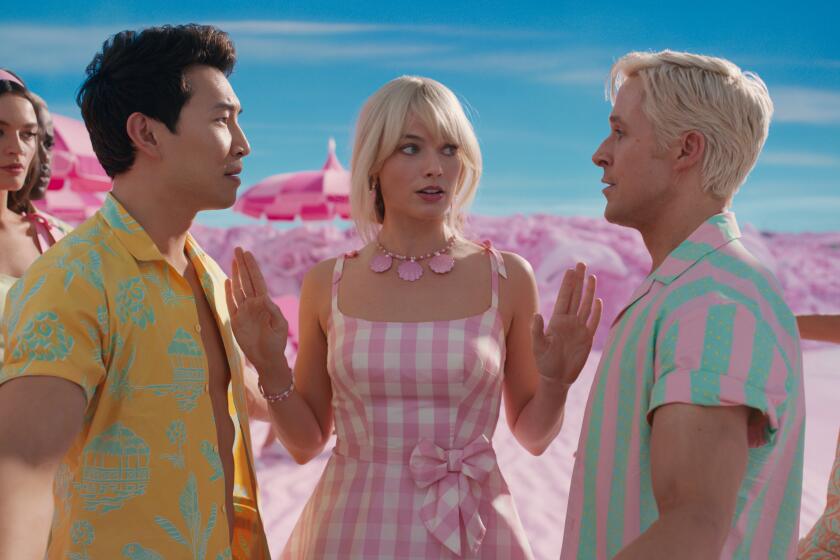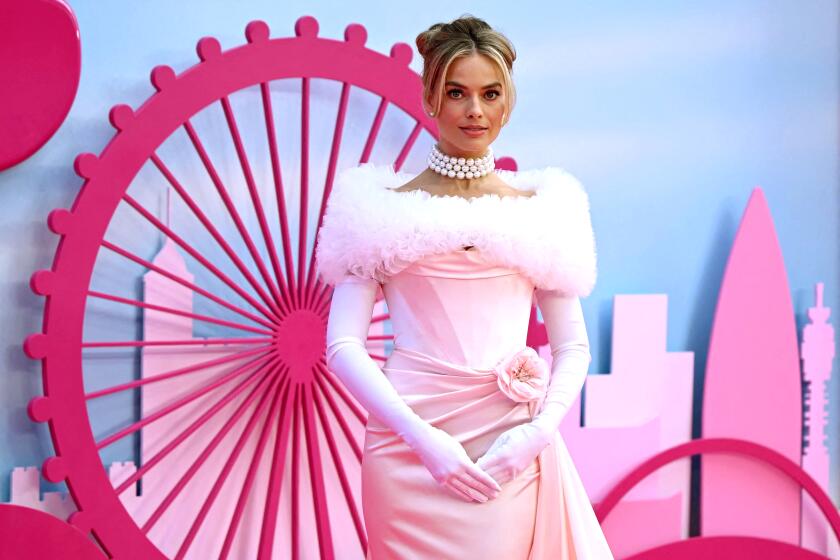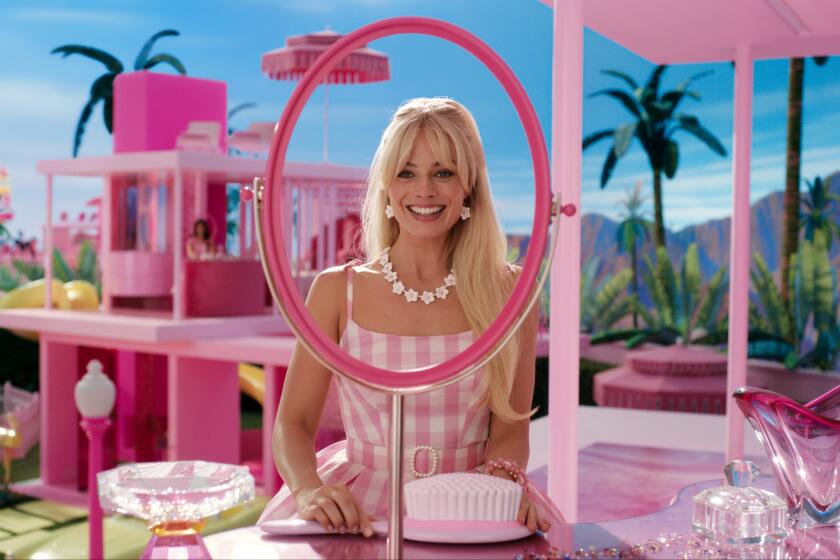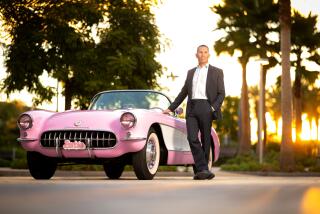Yes, Barbie is a feminist — just don’t ask her creators
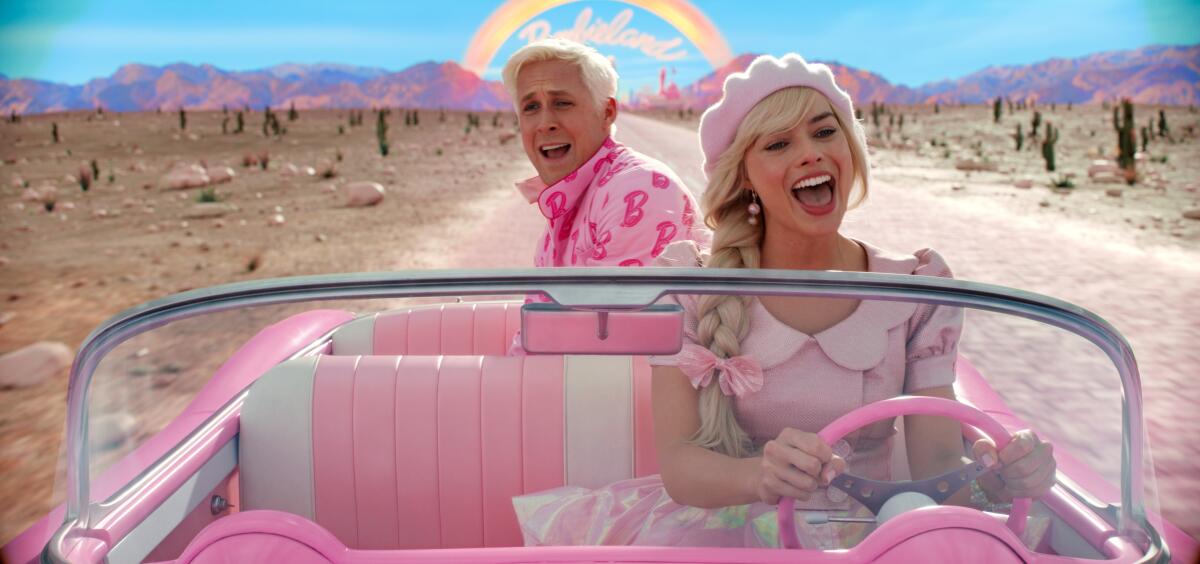
- Share via
Almost 30 years ago, when I researched and wrote a history of the people and ideas that led to the creation of Barbie, I had no doubt she would be as talked about in 2023 as she was in 1959, when she first appeared.
But what I never expected was the way that this plastic object, once tarred as anti-feminist, has come to be viewed as feminist, or, in any event, as an important cultural touchstone in understanding feminism.
From the get-go, Barbie and her possessions reflected and shaped the marketplace, experiencing meteoric sales when her consumption patterns and activities were in harmony with the zeitgeist, and weathering blistering criticism when they were not.
Barbie is in tune with the times again — at least as she appears in Greta Gerwig’s new film interpretation of her, coming out Friday. The movie’s zany, self-ironic production design suggests that Gerwig is not only well versed in feminism but also in camp, an aesthetic sensibility that values artifice, exaggeration and parody. This strikes me as the right sensibility to investigate Barbie.
Greta Gerwig’s ‘Barbie’ movie starring Margot Robbie and Ryan Gosling is expected to be one of the summer’s biggest hits. Here’s what you need to know about the film.
Gerwig has picked up on the female-centric universe that many little girls create around the doll and her main accessory: “She’s everything. He’s just Ken,” reads the film’s poster.
While I suspect every armchair gender theorist will be deconstructing Gerwig’s movie soon, Barbie’s resurgence of popularity has made me consider her relationship to the various waves of feminism that have pummeled her surfboard since she first took form here in Southern California.
Invented by Mattel co-founder Ruth Handler, Barbie was essentially knocked off from the Lilli doll, a German gag gift for men, based on a comic character in a downscale German tabloid. Lilli was not a “nice” girl; her raison d’être involved swapping sexual favors for money.
While as a piece of sculpture, the first Barbie doll was virtually indistinguishable from the Lilli doll, Handler positioned Barbie as a wholesome, virginal, all-American girl next door.
The first Barbies also came with a chic business suit and a portfolio of fashion sketches, paraphernalia for a career in design. One could argue that this version of the doll — with an unabashedly sexy body, no husband and a self-supporting job — sent a proto-feminist message to little girls. With objects rather than words, it preached the gospel of Helen Gurley Brown’s 1962 book “Sex and the Single Girl,” an anti-marriage manifesto and an argument for women’s financial and sexual autonomy.
Second-wave feminists, however, sneered at the tiny career clothes and saw nothing but the creepy, unrealistic body beneath them. In 1968, feminists protested the Miss America pageant, which enshrined the type of exaggerated looks Barbie embodied. In 1971, the National Organization for Women accused Mattel of gender stereotyping boys and girls. At Toy Fair in 1972, yet more feminists accused Barbie of encouraging little girls to see themselves as sex objects, clothes mannequins or household servants.
The words might have wounded Barbie to the core, if she had heard them. But she likely was holed up in her Dreamhouse, preparing to emerge in her 1977 “Superstar” incarnation.
From Enchanted Evening Barbie to Solo in the Spotlight Barbie, Margot Robbie’s ‘Barbie’ movie premiere looks have been inspired by the doll itself.
To be fair, Barbie had not been aggressively oblivious to other social movements in the 1960s and ’70s, notably civil rights. In the late 1960s, she had friends of color: Christie, a Black doll who had the same body that Barbie had, and Francie (with the unfortunate name of “Colored Francie”) who was flat-chested and could wear “mod” clothes. This is, of course, a far cry from intersectional feminism — a newer category of feminism that takes oppression because of race, class and sexual orientation into consideration. But it was not utterly tone deaf, either.
In the ’80s, Barbie had another pivot. A major recession forced more women into the workforce, and Barbie went with them. Day-to-Night Barbie (1985) had a pink power suit, a briefcase and came out at the same time as the dolls’ startling new anthem, “We Girls Can Do Anything.”
Despite the promise of this message, the women behind the campaign, at Mattel and at Ogilvy & Mather, Barbie’s ad agency, refused to identify as “feminists.” It was still a stigmatized word in corporate America.
Third-wave feminism, in the 1990s, took a more complicated and nuanced view of the world. It enshrined, among other things, the idea of a woman’s right to control her own sexual expression, and, you could even say, her right to pleasure. When it came to Barbie, this form of feminism advanced the daring idea that some women might actually take pleasure dressing like the dolls, a practice that some second-wavers might have interpreted as retrograde and submissive to patriarchy.
The largely online movement of fourth-wave feminism that began around 2012 had a big impact in Barbie’s world. It embraces intersectionality and body positivity, challenging the idea that there is only one ideal body type.
The ‘Barbie’ film used so much pink paint that it depleted the global reserves of its supplier, Rosco, which were already limited by supply chain issues.
By 2016, possibly in response to this movement, a team of Mattel executives and designers made the first changes to Barbie’s iconic body — adding millimeters of width to her thighs and waist and reducing her formidable breasts. They may, of course, have had other motivations: According to a 2016 Washington Post article, Barbie’s share of the global dolls and accessories market had declined every year since 2009. What could Mattel lose by shaking things up?
Apparently, nothing. Barbie reversed her decline. But one thing stayed the same: Like the “We Girls Can Do Anything” team in the 1980s, the creators of the 2016 Barbie refused to identify as feminists.
This week, Warner Bros. and Mattel will release a film by a female director with a feminist track record. Yet what word did Mattel executive Robbie Brenner, who spearheaded the project, tell Time that she would not apply to the movie?
You guessed it.
In Barbie’s world, however, objects speak louder than words. Between her vast array of ethnicities and body types — not to mention professions and personas — she is clearly a strong, independent woman.
So why won’t Mattel say “feminist”? Perhaps they just balk at stating the obvious.
M.G. Lord an associate professor at USC Dornsife, the author of “Forever Barbie: The Unauthorized Biography of a Real Doll” and co-host of the podcast “L.A. Made: The Barbie Tapes” from LAist Studios.
More to Read
A cure for the common opinion
Get thought-provoking perspectives with our weekly newsletter.
You may occasionally receive promotional content from the Los Angeles Times.
